Editor’s note: This season, Timbers.com and Howler Magazine are collaborating on a series that will explore soccer in Portland and the city’s influence on the game in the United States. This story, the second in the series, looks at the history, culture, and constant re-invention of Providence Park and how its evolution has produced one of the finest soccer venues in North America.
------------
In 2001, a construction worker took a lunch break on some planks of wood resting on pallets. The job was upgrading Portland’s nearly century-old stadium into a new home that could house minor league baseball and soccer, which meant that some of the structures that had been built for over the decades of use needed to be cleared away. He began to pick absentmindedly at the paint covering the planks, which were about to be hauled off and recycled. The boards had formed the benches in the northeast corner of the stadium, a section now set to be new game day suites. Soon, the worker noticed something beneath the topcoat. He became curious. He unfolded a pocket knife and began to chip away.
Eventually, nine layers of paint later, he found that the boards were yellow, straight-grain old-growth Alaskan fir, the kind of wood you just can’t find anymore. It was a startling discovery, dating back to the stadium’s opening in 1926, and the project’s overseers saw an opportunity to keep some of the building’s history intact. They rerouted the boards, stripped the paint, and stored them. Now those benches are part of the furniture in some of the stadium’s suites and in the ROOT SPORTS Lounge Bar overlooking the field. Ken Puckett, the Portland Timbers’ senior vice president of operations, is looking for the right opportunity to use the rest; three pallets remain, waiting to be re-purposed in what has become one of the country’s most historic soccer venues.
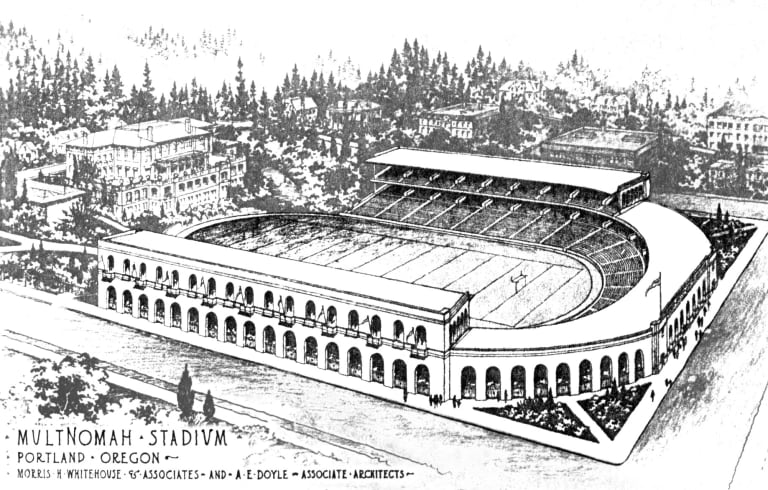
In the beginning, there was a wild field. In years to come, the area enclosed by 18th and 20th and Morrison and Salmon in Southwest Portland would host dog racing and ski jumping. Jack Dempsey would fight there. Pelé would play his final soccer game as a pro between those streets. But before they put together a stadium, and before a series of renovations that would, finally, make it one of the best places in America to watch soccer, the plot of land was nothing more than a lush green pasture in Tanner Creek Gulch, named for the tannery that had operated just a hundred yards away.
It was a large, anonymous field—nothing much to look at and certainly nothing special in the young city of Portland, which had fewer than 50,000 residents in 1890. The city had plenty of open space, but it needed a place to play. So in 1893, 26 American football players, founders of the Multnomah Athletic Club (MAC) two years previously, made a decision that would alter the future of sports in Portland forever: they leased the land, transformed the pasture into a playing field, and set in motion a string of events that continue to reverberate around the Goose Hollow neighborhood and beyond more than a century later.
The area had been a 21-acre vegetable garden tended by the city’s Chinese population prior to the MAC members transforming it into a stadium of sorts, erecting a grandstand with seating for 3,000 in the northwest corner. Multnomah Field was born and the sporting events followed. In 1895, two years after construction was finished, two Major League Baseball teams staged an exhibition. In 1905, just months after Tanner Creek flooded the grounds, the Portland Giants played the early part of their season there. The team would change its name to the Beavers and call the stadium home at various points in its history for the next 105 years. College football came to town in 1908, when Oregon and Oregon Agricultural College—nicknamed “Moo U” and better known today as Oregon State—battled for the first time. In 1909, the newly elected president of the United States, William Taft, gave a speech to 20,000 people who crammed into the venue, half of them in recently erected steel bleachers. A photograph from the period shows the president standing up and tipping his top cap to the crowd as he departs in an open car, followed by a flag-bearing rider on a horse. Advertisements for Owl Cigars and Coca-Cola line the stadium wall behind him.
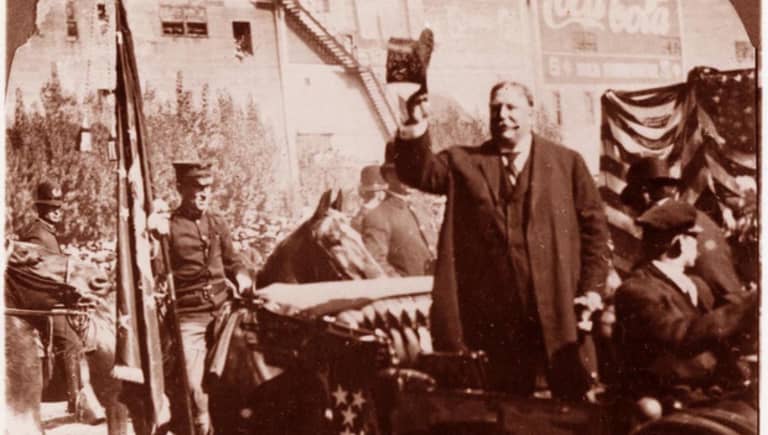
The Rose Festival, founded in 1907, was a popular yearly event. In 1917, Dr. Wm. E. Ruggles wrote "This year the Rose Festival departed from its usual method of selecting a queen, a Queen of Fairies, being selected. Wed., June 14, Nina, Queen of the 11th Rose Festival and her Royal Consort Mac Lewis were crowned at Multnomah Field with an elaborate ceremony. Highlights of the Festival program were the Sunrise Gun at 7:00 a.m. followed by community singing of four thousand trained voices. The Grand Floral Parade was held in the afternoon with civic, fraternal, military and naval bodies participating. It was led by the Royal Rosarians and it also included a large children's parade.”
But those events were just warm-ups. In 1925, the club voted to proceed with a $500,000 renovation, expanding capacity to 28,000. Two architects worked on the project. A.E. Doyle had designed some of the city’s best-known buildings—as well as its iconic water fountains, known as Benson Bubblers. The other, Morris Whitehouse, was one of the MAC’s own members and would go on to create the Portland’s courthouse six years later. The duo envisioned a horseshoe-shaped design, with stands extending three quarters of the way around the field and the MAC clubhouse creating a buffer at the southern tip. But they were only able to build a little more than half of the seats because the MAC did not have the permits required to build along 18th Avenue. The modified design turned out to have an unintended benefit, opening up the stadium to the street and creating the feel of a neighborhood institution that continues today. On October 9, 1926, MAC officials dedicated the stadium—the work coming in just $2,000 over the half a million budget—and 24,000 fans watched the University of Oregon’s football team fall 23–9 to their rivals from the University of Washington.
Multnomah Stadium continued to host a variety of sporting events throughout the 1930s. Heavyweight champion Jack Dempsey sparred with four separate opponents, going two rounds apiece, in 1931. The night before, he appeared on Oregonian-of-the-Air radio program, thrilling listeners with tales of his days as the heavyweight champion of the world. Dog racing began in 1933, allowing Portland citizens to back a pooch 60 days out of the year until 1955.
“We found dog race tickets in a pile, a lot of old trifecta tickets,” Puckett said of the most recent renovations, in 2010. “There weren’t any winners.”
A little culture came to the stadium in the 1930s in the form of the “Starlight Symphonies,” six open-air concerts every summer. The shows, which drew 10,000 Portlanders dressed in their summertime finest, featured a 45-piece orchestra and world-famous conductors. The Sons of Pioneers played the venue in 1949. They weren’t a huge draw, but it was the first group to feature a certain Leonard Slye, better known as Roy Rogers. A ski jump, along with 200 tons of artificial snow, was installed for the Portland Rose Festival in June 1953. Nearly 40,000 watched the jumpers take flight in a warm rain.
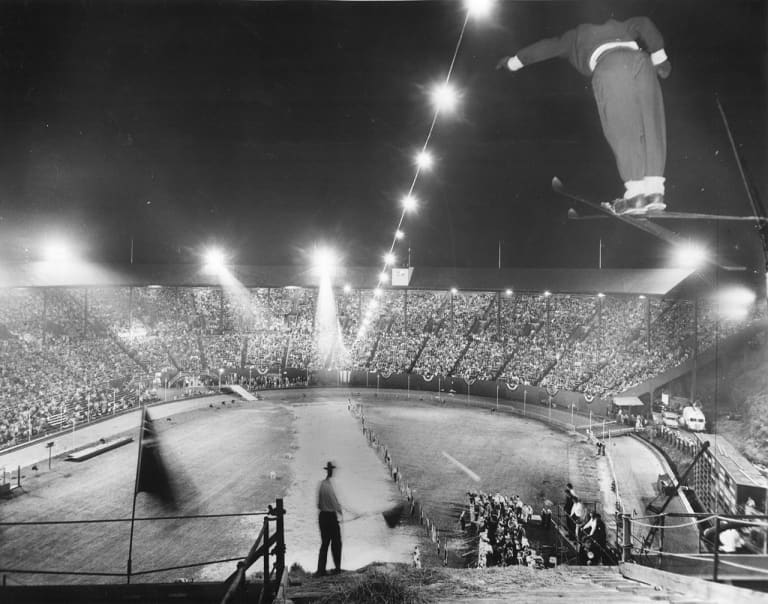
In 1955, the 604-yard dog-racing track was removed and the Los Angeles Rams and New York Giants of the National Football League came to town for a preseason exhibition. Former U of O quarterback Norm Van Brocklin started for the Rams, who prevailed in the first official NFL game to go to overtime, on a two-yard touchdown run by the wonderfully named Tank Younger. Van Brocklin, four years removed from throwing for an NFL-record 554 yards in a game, wore the Rams famous blue and yellow helmet and drew cheers from the adoring crowd. Two years later, a different kind of hip-shaking occurred when Elvis Presley arrived in a white Cadillac convertible and serenaded 14,000 fans with songs like “Don’t Be Cruel” and “Teddy Bear.” A newspaper story from the time says that more than 50 concert-goers collected dirt from a patch where the King had knelt and took it home as a souvenir. Another piece in The Oregonian, written by 14-year-old Holly Johnson, reports that “finally around ten o’clock Elvis rode down the field in his white convertible. The girls in the audience let out a scream that could be heard in Memphis, Tenn.”
The city of Portland took over in 1966, purchasing the facility for $2.1 million and renaming it Civic Stadium. Three years later, the stadium was the first outdoor baseball field to install AstroTurf. The World Football League came to town in 1974, but two subsequent teams—the Portland Storm and their replacements, the Portland Thunder—disappeared with the league after playing one season each.
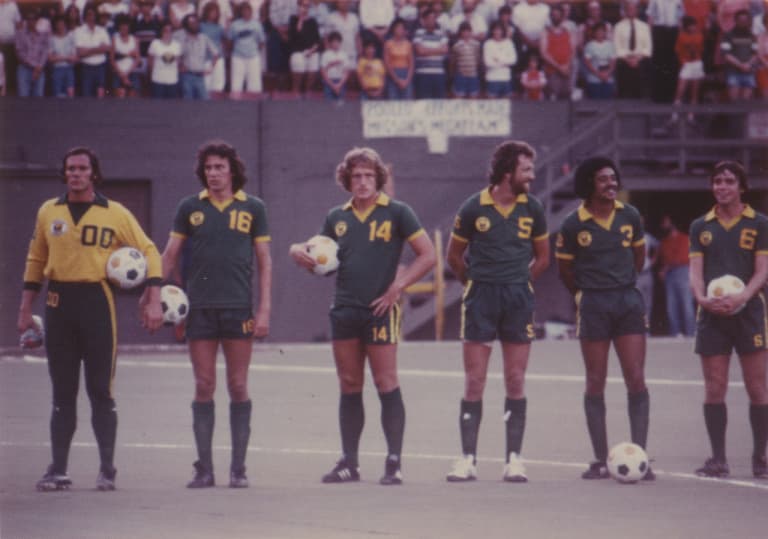
Then, in 1975, the Timbers came along and captured the imagination of the city. More than 3,000 people submitted potential names and while just 6,913 fans showed up for the first match against the Seattle Sounders at Civic Stadium on May 2, 1975, the expansion club blitzed the North American Soccer League, riding the goalscoring of Peter Withe, the imagination of midfielder Barry Powell, and the goalkeeping of Graham Brown. The squad started winning, and attendance jumped to 15,000 by June and 25,000 in July. The Timbers reached the Soccer Bowl in their first season, where they lost 2–0 to the Tampa Bay Rowdies at San Jose’s Spartan Stadium. Despite the defeat, the crowd was hooked, turning Portland into Soccer City, USA. Steven Lenhart, a lifelong Portland fan, remembers those early years fondly.
“When I was a kid, I was on a soccer team and they would pile us all in the back of a pickup truck and go down to the stadium,” he said. “I remember it being jam packed always and pretty rowdy. It was pretty crazy for a young kid.”
The Timbers would struggle for the next few seasons, failing to make the playoffs, but Civic Stadium hosted the ‘77 Soccer Bowl, which turned out to be Pelé’s final professional match. His New York Cosmos prevailed over the Seattle Sounders thanks to Steve Hunt, who scored after stealing the ball from the unsuspecting Sounders goalkeeper, and then a late Giorgio Chinaglia header. Somewhere between 35,548 and 41,270 fans watched, depending on whose account you believe.
“The fans are throwing things at Carlos Alberto,” the announcer yelled at one point during the broadcast. “They are throwing soda and beer.”
After the match, those same fans swarmed the shirtless Pelé.
That year, 1977, was also the final season for the Portland Mavericks, an independent baseball team in the Northwest League, which featured a pre-Hollywood Kurt Russell manning the infield. Though the Mavericks would go on to the big baseball field in the sky; Russell took the lead role in Escape from New York. Civic Stadium got a new roof during the winter of 1981–82, an improvement that cost $9.5 million. According to Puckett, the glu-lam, wood-beamed structure wouldn’t be an option today because of the price of the lumber, but it made sense in the early ’80s. It protected more seats and made the field feel like home for the Portland Beavers. In 1991, Rodney McCray performed one of the all-time great bloopers by running through the outfield fence.
While baseball served as the primary tenant during the 1990s, soccer came to Rose City for a 1998 World Cup qualifier. On a beautiful September day, the Americans battled with Costa Rica. A crowd of 27,396 watched from the normal stands and temporary bleachers in left field, and they created what “might be the best atmosphere ever for a U.S. soccer match,” according to ESPN announcer Bob Ley. Tab Ramos delivered a game-winning laser in the 79th minute from a layoff by Marcelo Balboa.
The stadium earned another facelift in 2000. After discussions about leveling the venue petered out, workers gutted the electrical and plumbing, adding new locker rooms, lower-bowl seating, concession stands and widened concourses. It was quite a job. “Prior to that everything was pigtailed on to pigtailed on to pigtailed or expansion on to expansion,” Puckett says.
“We found surprises all around it,” Gregory J. Holloran, the project manager, says. “Baseballs. Areas where they were staging building bricks. Hundreds of bottles and things that had been left underground. Everything below surface was pretty interesting.”
Including a creek. Yes, a creek. Tanner Creek, named for the tannery that previously existed in the field that would become the stadium, was buried underground in a six-foot-wide brick and mortar pipe that runs from the southeast corner under the field and exits in the northeast corner. At points, it’s only six feet below the surface. But before 2000, nobody knew exactly where it was. A major issue during that year’s renovation was determining the creek’s exact path. It took a tremendous amount of effort.
“I’ll never forget that the owner brought out a guy, Ralph, who had a robot-driven car with a beacon on it,” Holloran says. “He’d walk on the field and try to hear his beacon. We’d pothole and look for it and it wouldn't be there. We did that for months and months.”
Eventually, the group managed to find the exact location of the pipe and drove piles down 100 feet on either side of it to support the structure and ensure it wouldn’t settle. Just another quirky feature of the lovable stadium.
“The idea that you have to protect a creek that's running through a brick pipe is not something that I’ll soon forget,” George Messina, who oversaw the project for ICON, says.
In 2001, baseball returned when the Albuquerque Dukes moved to Rose City, became the Triple-A franchise of the San Diego Padres, and were renamed the Portland Beavers, and Civic Stadium became PGE Park. The Timbers returned as well, playing in the USL, A-League, the USL First Division, and the USSF Division 2 Professional League between 2001 and 2010.
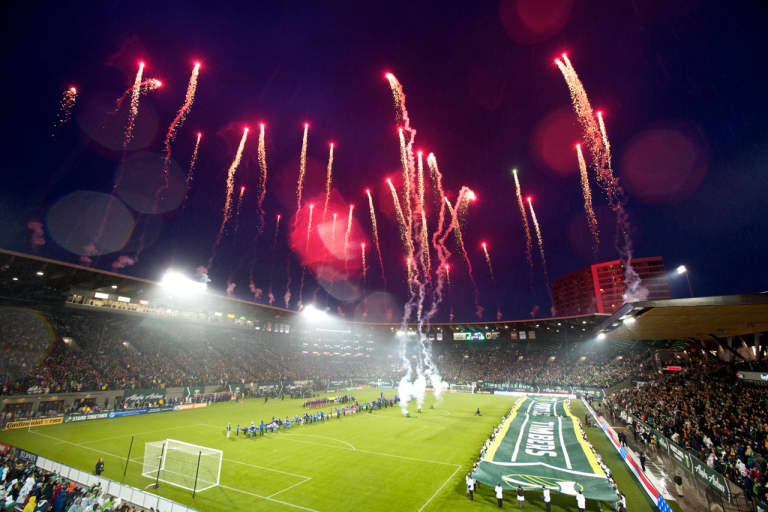
Then, of course, it was time for soccer and soccer only as the sport of the United States’ past gave way to the sport of its future. In 2009, MLS awarded a new franchise to owner Merritt Paulson. As part of the transition, the Beavers moved to Tucson and became the Padres while workers started on a $40-million project to convert PGE’s outfield into a shape more suitable for soccer. They installed 96,000 square feet of new playing surface and boosted the seating to 20,000 by finally completing the horseshoe. A new video screen, a public plaza, a restaurant, a team store, and other amenities made the building feel like a modern stadium. And yet, at the same time, the designers and architects worked closely with Goose Hollow residents and the Portland Design Commission to maintain a sense of the building’s past. Whereas the wall along 18th Avenue had been an imposing, nine-foot cinder block wall, it’s now an open wrought-iron fence designed to allow sound to escape and people to peek inside.
On March 19, 2011, a sold-out crowd of 18,627 watched the Timbers defeat the Chicago Fire, 4-2, in their MLS home debut. The stadium was rocking that night, and it hasn’t stopped since. Providence Park remains an icon, the type of place that unites generations, and has been sold out for every regular season game since the debut.
“The one thing that hasn’t changed is the fact that it’s the same stadium,” Lenhart says. “The original grandstand in the mid-field area is still the same wooden bleachers. They’ve prettied it up in other areas, but it’s still the same.”
Providence Park embodies Portland. It can be cold and dark, especially when the wind blows, but it’s old school, with the type of eclectic charm that only comes after decades of use and dozens and dozens of different types of events. It’s all part of the charisma that seeps out of the old growth wood and the ancient concourses that have been updated for the new era. The venue brings old and new together.
“For almost 90 years, Providence Park has been home to some of the most iconic moments in Oregon sports history. It also ranks with such classic venues as Wrigley Field and Fenway Park as a stadium that has stood the test of time and that is uniquely part and parcel of the city in which it resides," Kerry Tymchuk, executive director of the Oregon Historical Society, says. “Portland is a city that prides itself on its uniqueness. While many major cities have chosen to replace historic sports stadiums with modern domes or complexes, Portland has chosen to retain much of the original architecture and charm of one of architect A.E. Doyle’s most beloved creations.”
Lenhart agreed: “The fact that they are still playing in that stadium makes a big difference. The fans back in the ‘70s that watched the game when they were a kid or early 20s are still able to relate to the stadium, the team, the Timbers, the name. Soccer fans have a romantic view of the sport through Europe. The fact that they can go to a historic stadium and the fact that it looks old and feels old as far as the Timbers goes makes people feel like they are closer to the root of the sport.
“Some of the seats are probably the same exact seats I sat on as a kid.”
Puckett is more succinct: “Providence Park is a piece of Portland history.”
Not a bad legacy for a cow pasture.
-----------
Words: Noah Davis has written for The New Yorker, GQ, Men's Journal, New York, The Wall Street Journal, Fast Company, Details, Sports Illustrated, and many others. He is a deputy editor at American Soccer Now, Grantland's United States national team columnist and has also *reported from the 2010 World Cup in South Africa, a coup in Honduras, and the 2012 Euros in the Ukraine.
Animation: Case Jernigan / Off-Foot Soccer*











